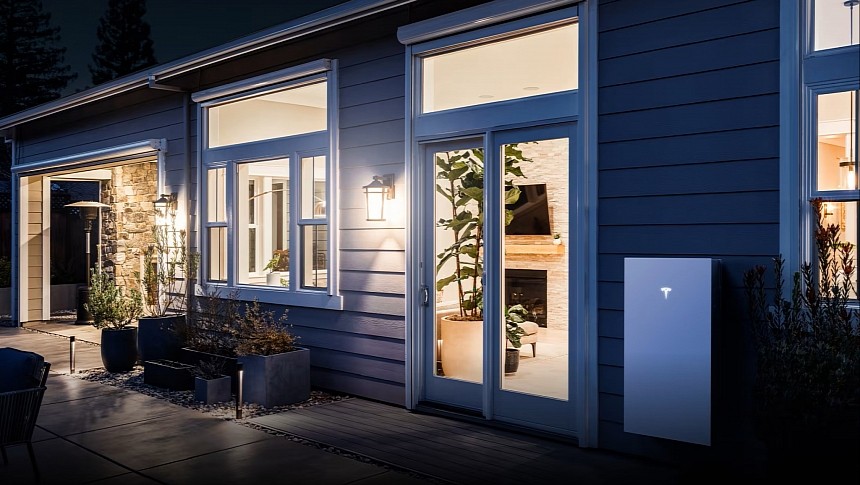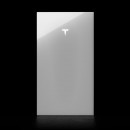Tesla released the Powerwall 3 specifications, confirming previous speculations and insider information. The upgraded Powerwall has been improved in key areas, notably backup power and the number of solar power inputs. Although Tesla states that the Powerwall 3 will come next year, installations have already been reported.
Rumors about the third-generation Powerwall first appeared in the spring, as Tesla certified the new storage system with various power utility companies. It then became known that Tesla would switch the batteries inside the Powerwall 3 from NMC (nickel-manganese-cobalt) to LFP(lithium-iron-phosphate) prismatic cells. This makes them cheaper to produce and more durable, but it was speculated that they would make the Powerwall 3 heavier.
Surprisingly, this is not the case, as revealed in the Powerwall 3 specifications. The new storage system is lighter and smaller, considering it also integrates the solar inverter, thus being equivalent to the Powerwall+. Its weight (287 lbs./130 kg) puts it between the Powerwall 2 (251 lbs./114 kg) and the Powerwall+ (344 lbs./156 kg), with the latter also featuring a solar inverter.
The Powerwall 3 is a tad thicker than the Powerwall 2 cabinets and not that visually pleasing, but the metal casing looks sturdier than the plastic casing of the Powerwall 2. It also features a glowing Tesla logo on the front panel. Previous generation Powerwall comes with Tesla lettering and a light strip on the side.
If you were wondering, the Powerwall 3 has the same energy capacity of 13.5 kWh as before. One method Tesla used to make the Powerwall 3 lighter and smaller than the previous generation was improving packaging. The new system uses prismatic cells instead of cylindrical ones, thus packing more battery capacity in the same form factor. The prismatic form factor has less wasted space than cylindrical cells.
Another significant change with Powerwall 3, besides using LFP cells, is that the system is now flood-resistant to over 2 feet (61 cm) of water. This should provide peace of mind when installed in areas prone to flooding. The Powerwall 2 specifications mention "water resistance" without offering more details.
The new energy storage system offers 11.5 kW of continuous on-grid and backup power, almost double compared to the 5.8 kW of the Powerwall 2. Powerwall+ can deliver up to 7.6 kW with solar panels when optimal conditions (full sun) are met. Thanks to this power boost, people can use a single Powerwall 3 unit for most household applications instead of several Powerwall 2 or a Powerwall+ and additional Powerwall 2 units.
The Powerwall 3 accepts six solar panel inputs versus only four in the case of the Powerwall+. It can also be expanded up to 40.5 kWh (three units), although you cannot mix Powerwall 2/Powerwall+ units with the newer Powerwall 3. The pricing has not yet been communicated, although some people reported on Tesla Motors Club that installations have already begun.
Surprisingly, this is not the case, as revealed in the Powerwall 3 specifications. The new storage system is lighter and smaller, considering it also integrates the solar inverter, thus being equivalent to the Powerwall+. Its weight (287 lbs./130 kg) puts it between the Powerwall 2 (251 lbs./114 kg) and the Powerwall+ (344 lbs./156 kg), with the latter also featuring a solar inverter.
The Powerwall 3 is a tad thicker than the Powerwall 2 cabinets and not that visually pleasing, but the metal casing looks sturdier than the plastic casing of the Powerwall 2. It also features a glowing Tesla logo on the front panel. Previous generation Powerwall comes with Tesla lettering and a light strip on the side.
If you were wondering, the Powerwall 3 has the same energy capacity of 13.5 kWh as before. One method Tesla used to make the Powerwall 3 lighter and smaller than the previous generation was improving packaging. The new system uses prismatic cells instead of cylindrical ones, thus packing more battery capacity in the same form factor. The prismatic form factor has less wasted space than cylindrical cells.
Another significant change with Powerwall 3, besides using LFP cells, is that the system is now flood-resistant to over 2 feet (61 cm) of water. This should provide peace of mind when installed in areas prone to flooding. The Powerwall 2 specifications mention "water resistance" without offering more details.
The new energy storage system offers 11.5 kW of continuous on-grid and backup power, almost double compared to the 5.8 kW of the Powerwall 2. Powerwall+ can deliver up to 7.6 kW with solar panels when optimal conditions (full sun) are met. Thanks to this power boost, people can use a single Powerwall 3 unit for most household applications instead of several Powerwall 2 or a Powerwall+ and additional Powerwall 2 units.
The Powerwall 3 accepts six solar panel inputs versus only four in the case of the Powerwall+. It can also be expanded up to 40.5 kWh (three units), although you cannot mix Powerwall 2/Powerwall+ units with the newer Powerwall 3. The pricing has not yet been communicated, although some people reported on Tesla Motors Club that installations have already begun.
Powerwall 3 is designed for fast & easy installation & has more power than ever before. Coming next year → https://t.co/92iOZ6PxQQ pic.twitter.com/d9tIDON06O
— Tesla Energy (@teslaenergy) September 13, 2023







